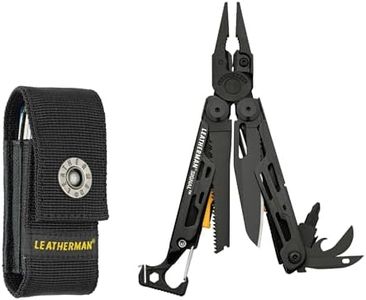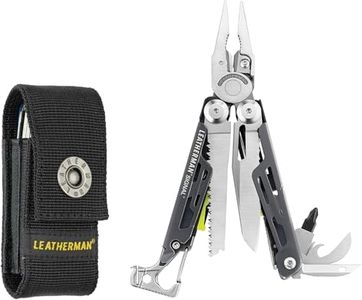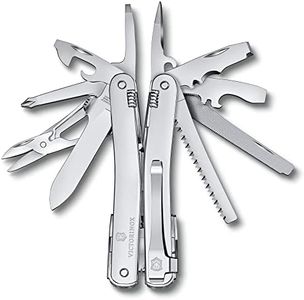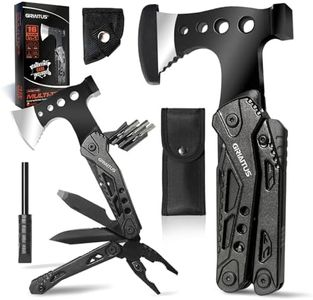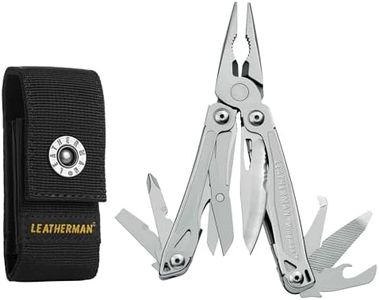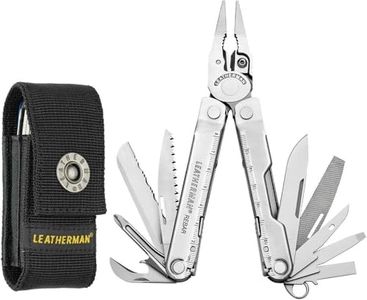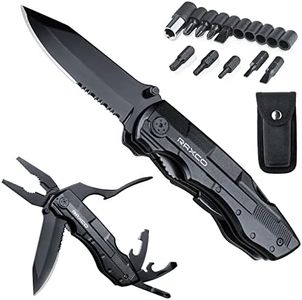We Use CookiesWe use cookies to enhance the security, performance,
functionality and for analytical and promotional activities. By continuing to browse this site you
are agreeing to our privacy policy
10 Best Multi Tools
From leading brands and best sellers available on the web.By clicking on a link to a third party's website, log data is shared with that third party.
Buying Guide for the Best Multi Tools
Choosing a multi-tool is all about finding the balance between portability, usability, and the right mix of functions for your situation. Whether you need one for daily tasks, outdoor adventures, or as an emergency backup, knowing what the main features do, and how they affect your experience, can help ensure you pick a tool that's actually useful for your needs.Tool Count and VarietyThe number and types of tools included is fundamental. More tools can mean more versatility, but a higher count does not always mean better if you don’t use most of them. Think about what you usually need—common elements are pliers, screwdrivers, scissors, knives, and can openers. If your main use is outdoors or survival, look for options with saws or fire starters. For daily carry, a basic set of screwdrivers and a blade might be plenty. Decide which functions you’ll actually use, and don't be swayed just by a long list of features.
Size and WeightSize and weight affect how likely you are to actually carry the tool. Compact multi-tools fit easily in a pocket and are better for everyday carry, but might lack larger blades or sturdy pliers. Bulkier tools often offer more functionality and stronger components but may sit unused if they’re too heavy or big. Consider how you plan to carry it—pocket, backpack, or on a belt—and pick a size that suits your habits.
Build Quality and MaterialsMaterials influence the durability and longevity of your multi-tool. Stainless steel is common and resists rust, while higher-end materials can be stronger, lighter, or offer better grip. Check how sturdy the hinges and locking mechanisms feel, as these are common failure points. If you need your multi-tool for heavy duty or outdoor tasks, look for reinforced or high-grade steel; for lighter, occasional use, standard steel will likely suffice.
Blade Type and QualityMost multi-tools have at least one knife blade, which can differ in length, sharpness, and shape. Serrated blades work better for rope and rough materials, while plain blades are easier to control and sharpen. Think about what kind of cutting tasks you'll face most often—camping may call for a versatile blade, while office use might only need a small, precise blade. The steel's hardness also matters for maintaining sharpness.
Ease of Access and One-Handed UseHow easily you can open and operate the tools is key, especially when you need quick access. Some multi-tools allow you to open tools or blades with one hand, helpful for situations where the other hand is busy. Others require more effort or even both hands to unfold. If speed and convenience matter, look for models with accessible, outside-opening tools and smooth, reliable mechanisms.
Safety and Locking MechanismsGood safety features prevent accidental closure of sharp tools on your fingers. Locking mechanisms hold the tools in place while in use, adding confidence and making the tool safer to handle. For infrequent, light use, basic spring tension might be enough, but for tougher applications or if you’re sharing the tool, solid locking systems are important to look for.
Maintenance and WarrantySome multi-tools are easier to clean, oil, and maintain, which makes a difference for longevity—particularly if you use them outdoors or in damp conditions. Removable and replaceable parts make long-term upkeep easier. Consider how you’ll care for your tool, and check if there’s a warranty, which can reassure you your investment is protected if something breaks from regular use.
